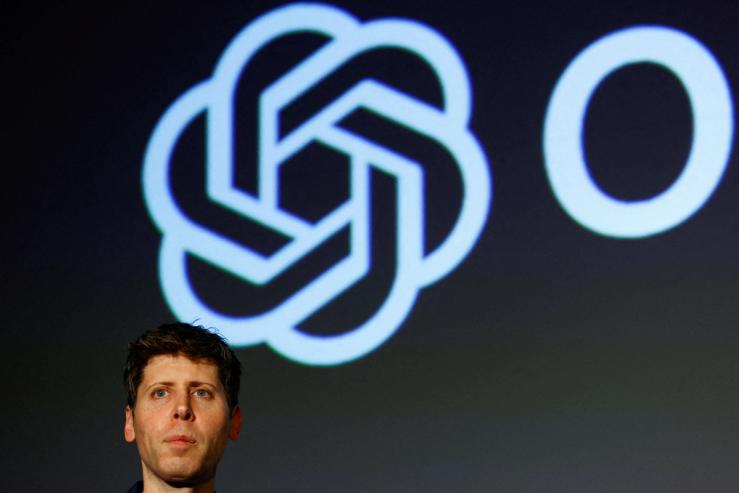The Scoop
OpenAI plans to open up its first office in Washington, DC, which will serve as both a hub for the company’s policy ambitions and a showroom for visitors to learn about the company’s products, OpenAI told Semafor.
The office, which the company has dubbed “The Workshop,” will be where everyone from policymakers to educators to nonprofits can get training on OpenAI’s tools, in some cases getting early previews of products.
“One of the things that we’ve discovered is that our technology is our best advocate, our best educator, our best lobbyist,” Chris Lehane, chief global affairs officer for OpenAI, told Semafor.
The office will be headed by Chan Park, the company’s head of global affairs for the US and Canada, and Joe Larson, who is leaving the defense tech firm Anduril to join OpenAI at the end of the month.
The AI giant hopes it can use the space to win over hearts and minds for its software and a hardware product CEO Sam Altman has said he hopes to release in 2026. It also aims to expand its partnerships and customer accounts in government and help shape regulation of artificial intelligence as legislators weigh everything from the risks of the technology to its copyright implications.
The Trump White House has made AI a key part of its agenda and is expected to release its AI action plan as early as Wednesday.
In this article:
Step Back
One hotly debated topic in the AI industry is on the technology’s potential economic impact. Anthropic CEO Dario Amodei recently made waves by predicting AI will eliminate half of entry-level, white-collar jobs in the next one to five years, potentially leading to 20% unemployment.
Nvidia CEO Jensen Huang recently weighed in, predicting AI will lead to economic growth due to new innovation and productivity gains.
OpenAI’s position is that one route to ensuring the gains from AI are widely distributed is to put the technology into the hands of more people.
“If you think about the fact that the economic pie is going to expand because of AI, the real question is who’s actually participating in the expansion of the pie?” Lehane said.
A ChatGPT subscription can run as high as $200 per month for the heaviest users. But Lehane said the vast majority of the 500 million people using the service are using it for free.
Altman was expected to speak at a Federal Reserve conference Tuesday, where he’ll have an opportunity to talk about the economic implications of AI.
Reed’s view
One of the remarkable things about the generative AI boom, besides the capabilities of the technology, is the willingness of people to pay for it. Web 2.0 trained us to expect amazing products for free, all paid for by targeted advertisements.
OpenAI, though, is on track to make more than $12 billion in revenue by the end of this year, and a lot of it is from individual customers paying for an internet service.
But from the way Lehane talked about it, the company would rather find a way to deliver its products to people for free.
Today, those on ChatGPT’s free version, which limits the capabilities and output of the models, cannot take full advantage of the tool. And that means they are falling behind.
If OpenAI were able to deliver the most powerful AI tools to the world for free, it would be a remarkable feat. Costs would need to come down significantly. Even then, it’s unclear whether advertising or some other business model could fund a service like that.
But the bigger question is whether putting these into people’s hands would accomplish OpenAI’s stated goal: ensuring the gains earned from the AI explosion are shared by the masses.
From a global perspective, AI could make an impact, especially in poorer countries. In the US, even the best AI tools can’t change certain realities. Say a person loses their job because they’re replaced by AI. In a perfect world, they could use OpenAI’s powerful software to help start their own business. But AI won’t be able to get that person health insurance for their family so they can afford to pursue their idea.
Room for Disagreement
The liberal think tank New America argues one way to ensure AI is truly democratic is to develop a “public” AI infrastructure, beyond open-source models that allow anyone to use them as they wish, for free.
“Openness alone cannot democratize AI or equitably distribute its benefits throughout society, partly because of the concentration of power in the technology industry and also because privately run AI models cannot perfectly align with specific democratic or public-interest objectives,” New America said. “This realization has increased calls for the development of a ‘public’ AI infrastructure … government-owned or other non-corporate models can be made democratically accountable in ways that privately owned models cannot.”
Notable
- Last month OpenAI launched its “OpenAI for Government” initiative and has been running a pilot program with the state of Pennsylvania. Governor Josh Shapiro said employees got back 30 hours of their time per month by using the software.
- OpenAI’s chief economist, Aaron “Ronnie” Chatterji, has been a big advocate for the company’s vision on how AI could shape the future of labor.


